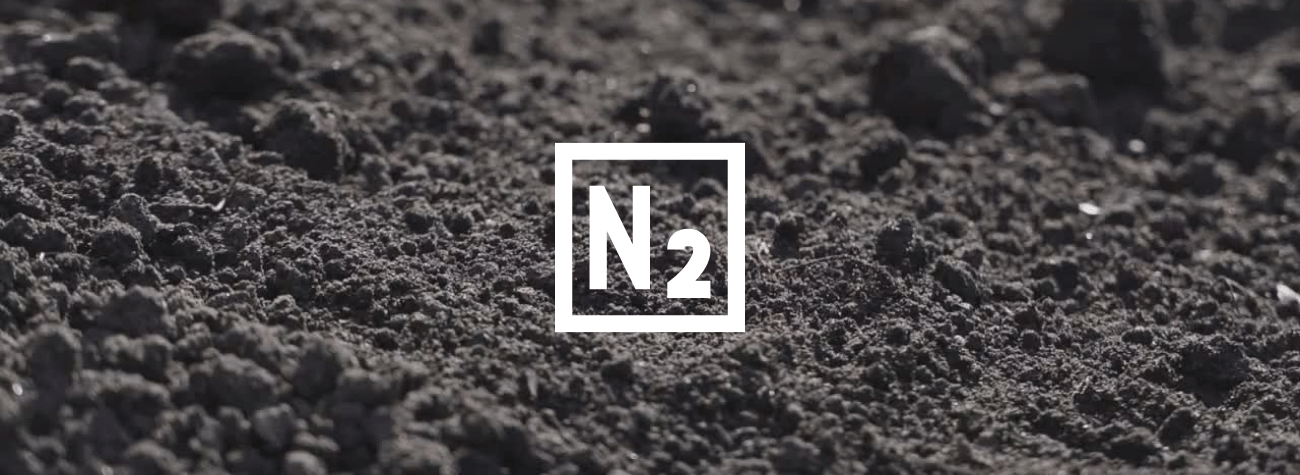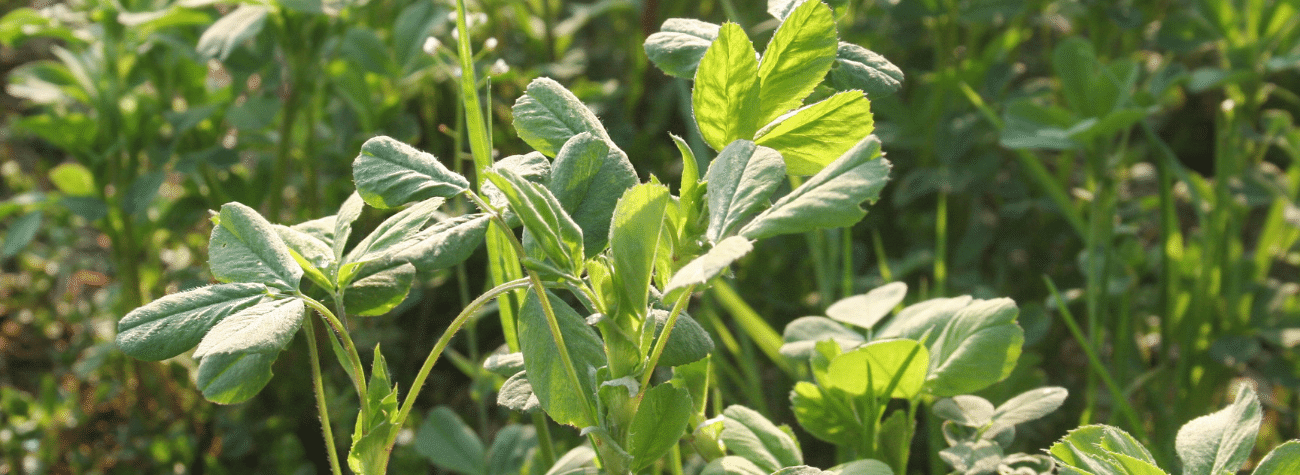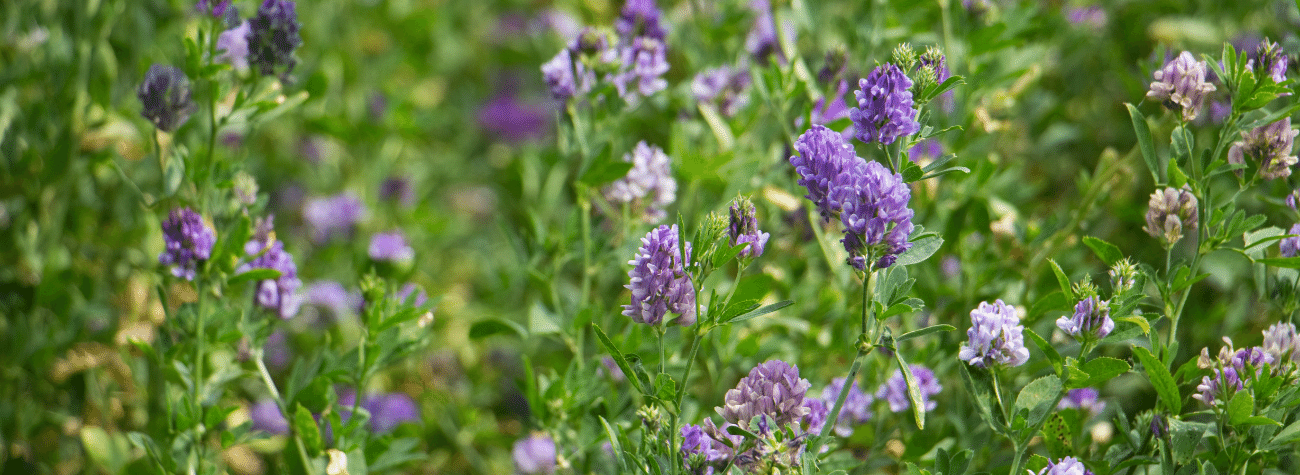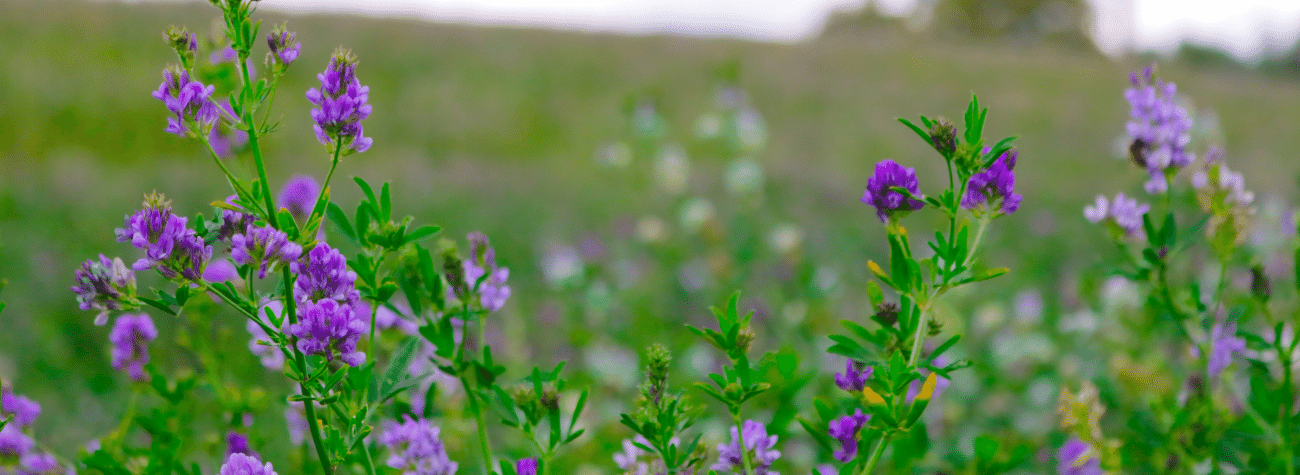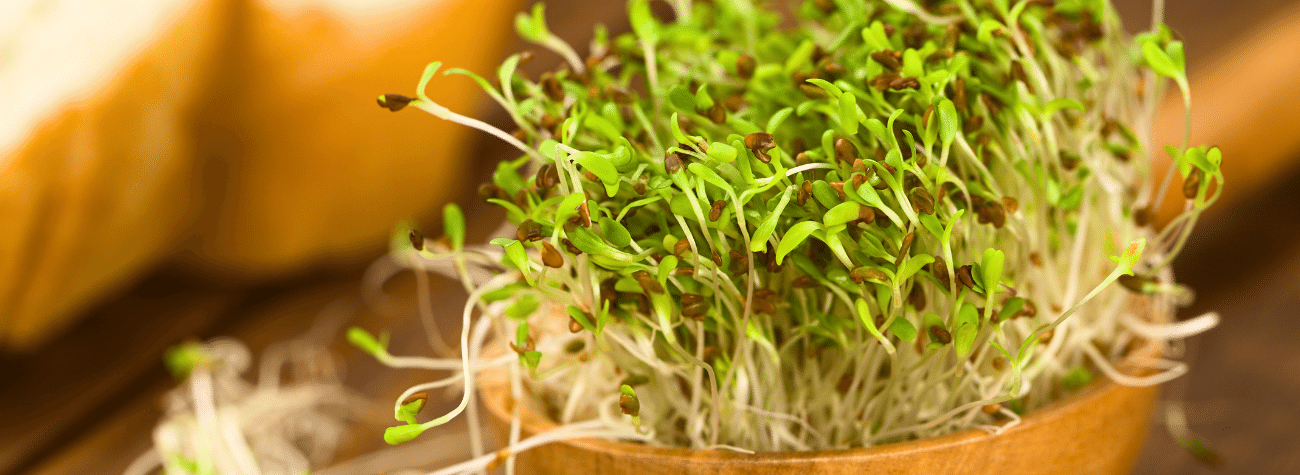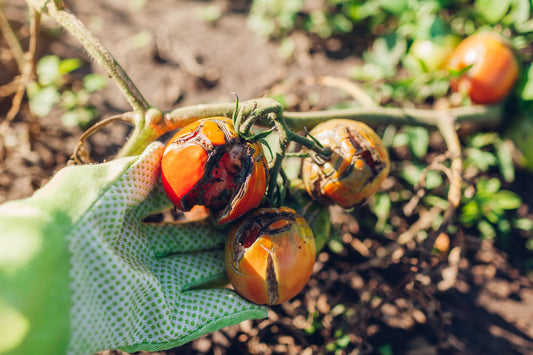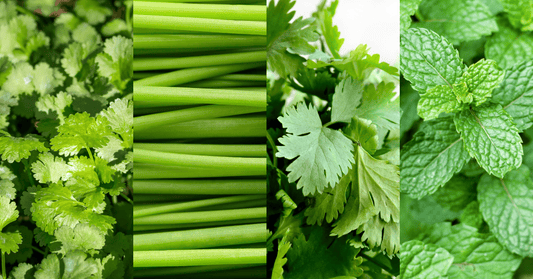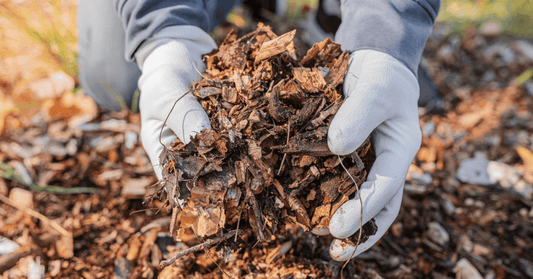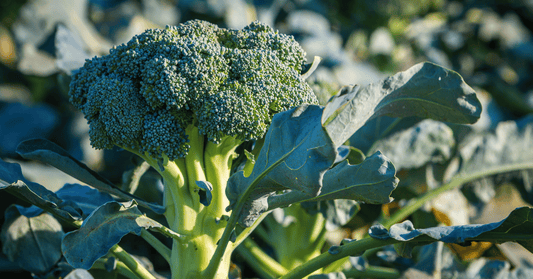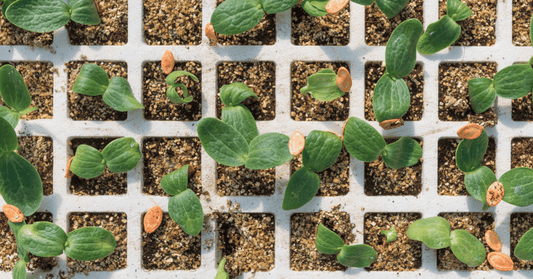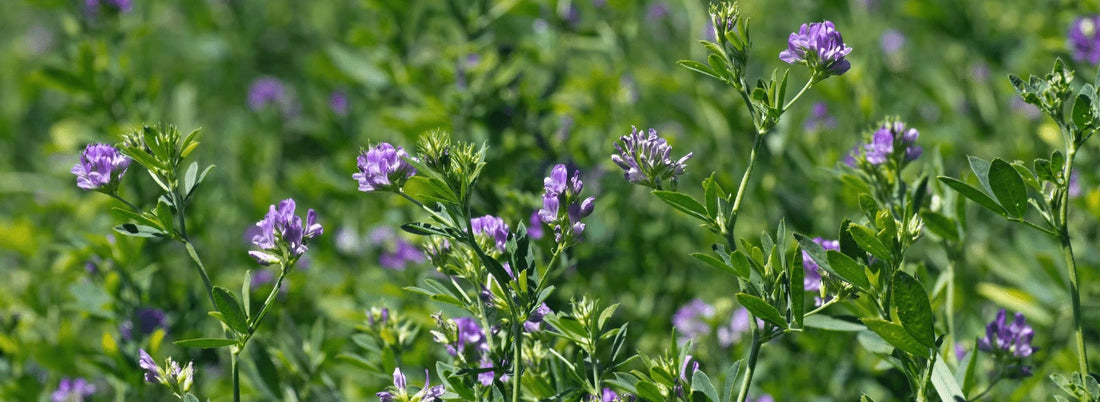
The Benefits of Using Alfalfa in Your Garden
The Benefits of Using Alfalfa As A Cover Crop in Your Garden.
Alfalfa has a long history in agriculture, with writings about the crop dating back to 1300 B.C. in areas near Turkmenistan, Iran and Turkey. The crop is well known for its use as animal feed or as a cover crop in large scale agriculture. But the beautiful purple hued plant is not only beautiful but also provides health benefits to your garden.
1. Alfalfa Adds Nitrogen To The soil
Nitrogen is an essential nutrient for plant growth. Nitrogen is used in chlorophyll production, plant cell development and fundamental in photosynthesis. Because plants need nitrates, N2 and ammonium needs to be converted or "fixed" into plant available forms.
The most common way nitrogen is "fixed" is with beneficial bacteria that cycle the nutrients into plant available forms. However, some plants can contribute to this cycling significantly and are called nitrogen fixing plants.
Alfalfa can absorb atmospheric nitrogen (N2) and store it in root nodules (essentially large growths on the roots). The nitrogen is fixed into plant available forms in the soil. The stored nitrogen can be used by other plants once the alfalfa is cut down or once roots breakdown into organic matter.
2. Alfalfa Breaks Down Into Organic Matter Quickly
Organic matter is the main reason alfalfa is used as an agricultural cover crop. When cut down and left in the field, alfalfa adds organic matter by quickly breaking down and providing very nutrient-rich organic material to the soil.
Alfalfa is very high in nitrogen and even provides other minerals such as phosphorus, potassium, calcium, sulfur, magnesium, boron, iron and zinc. Once decomposed all these are added to the soil and provide a considerable amount of nutrients.
3. Alfalfa Can Help Increase Yields
Alfalfa contains a hormone called Triacontanol. This hormone is necessary in root growth and photosynthesis and is also a tasty food source for beneficial microorganisms.
In studies on Triacontanol, the hormone has been shown to alleviate salt stress and help increase the uptake of nutrients and water in the rhizosphere (root zone).
Spacing alfalfa throughout your garden will bring the benefits of Triacontanol to your soil medium and also help increase the population of beneficial microorganisms.
4. Alfalfa Feeds Microorganisms
Many agricultural crop operations use alfalfa in their rotations as a cover crop because it has the ideal carbon to nitrogen ratio (24:1) for healthy soil and a robust population of beneficial microorganisms.
In addition to the root nodules full of nitrogen and the triacontanol hormone loved by microorganisms, alfalfa is full of proteins, amino acids, fiber and sugar among other minerals. The plant provides easy food for microorganisms as it breaks down more quickly than other green waste and is higher in nutrients.
5. Alfalfa Helps With Drought Resistance
You may think alfalfa would be a poor garden choice because it can use a lot of water, however it is also an extremely efficient user of the water. With its deep and sponge-like roots it actually saves water from leaching and helps the plants around it become more drought tolerant.
Be sure to harvest only the top, above-ground portion of alfalfa to ensure its useful roots remain in the soil. It can also be left as a perennial plant that adds aesthetically pleasing flowers for butterflies, bees, and other beneficial insects.
6. Alfalfa Roots Can Mine For Nutrients
Alfalfa is known for its deep roots that can extend up to 8 feet! This not only adds valuable organic matter to deeper areas of your garden but can help bring nutrients to the soil surface where other roots can benefit.
Hard to reach nutrients are taken up by the alfalfa roots for plant growth. When cut down and used for compost or left to decompose on the soil surface, those nutrients are left available to plants otherwise unable to reach so deep.
Growing Alfalfa with EM-1®
EM-1® can increase the growth of alfalfa, and other garden plants, significantly. In a trial done in the Southwest on alfalfa fields, yields were increased 35% and the farmer was able to make 8-13 cuts. For the home grower this means you can get more out of your alfalfa even as a perennial plant.
Multiple cuts means you can cut the above-ground parts to add to compost or use as a mulch in other areas of your garden. The roots remain, providing the nutrient-rich benefits and the plant continues to produce, growing much like an herb.
Simply spray 1oz EM-1® per gallon of water on the soil surface or on the entire plant once per week. In addition, EM Bokashi can be used as a top dress at 1/3 cup per square foot. A common hose-end garden sprayer or any container can be used.
For a more cost effective option, Activated EM-1 can be brewed and has the same great benefits and application method.
Other Beneficial Things To Do With EM-1®
Alfalfa Fermented Plant Extract
Alfalfa fermented plant extract or FPE is a popular foliar treatment seasoned growers use to stimulate plant growth and increase yields. As discussed above, alfalfa contains trianconatol. Trianconatol is a natural fatty acid that is important for plant growth and photosynthesis.
This plant extract is perfect if you don't want to add alfalfa plants to your garden or lack the room but still want the benefits alfalfa can bring.
Ingredients:
(Makes 1 gallon of extract. Time to ferment is 4 weeks)
1 Cup of Alfalfa Meal (alfalfa meal is fermented alfalfa seed and can be found at most gardening stores).
3/4 Cup Blackstrap Molasses
3/4 Cup EM-1®
Hot Water
1 Gallon container with an airtight lid
Directions:
(1) Using a funnel, pour ingredients into the 1 gallon container.
(2) Fill the container with hot water and screw on the cap.
(3) Shake until all the molasses is dissolved.
(4) Check the container every few days and unscrew the lid to release any pressure. Be sure not to take the lid off as air could cause the solution to go bad.
(5) After 4 weeks the solution is ready to use.
NOTE: The solution should not smell bad but have a grassy EM-1 odor.
Application:
Dilute 1oz of the extract and mix with 1 gallon of water. Drench the plants and soil. Apply once a week in combination with EM-1.®
Grow Nutrient Rich Alfalfa Sprouts
Do you love sprouts on your sandwiches, salads, or just by themselves? Sprouts are a common source for food-borne pathogens when you're not carful about the source. What better way to avoid the risk then grow your own with the seeds you grew from your alfalfa plant and the strength of EM-1 for fast seed germination.
Ingredients:
Large, wide mouth canning jar.
Plastic crafting screen or cheesecloth
Alfalfa seeds (other seeds include broccoli and radish)
Directions:
(1) Fill the bottom of your jar with enough seeds to cover the bottom in one layer.
(2) Cut plastic screen or cheesecloth to fit the top of the jar and screw on the outer jar lid (not the top) or use an elastic for cheesecloth.
(3) Dilute 1/2 tsp of EM-1 and enough water to soak the seeds and let sit for 15-20 minutes. Then drain through the screen or cloth.
(4) Add a small amount of water, just enough to cover the seeds and soak for 12hrs.
(5) Drain the water and leave the jar upside down or tilted in a bowl. This is how your jar will now stay.
(6) Twice a day, pour water into the jar and rinse seeds by swirling around. Immediately drain water and set back upside down.
(7) On day 2-4, spritz the sprouts with a EM-1 solution after draining the water.
(8) Sprouts will be ready to eat in 3-5 days. Store in the fridge for up to 5 days.

